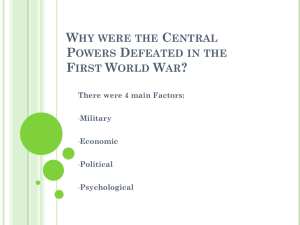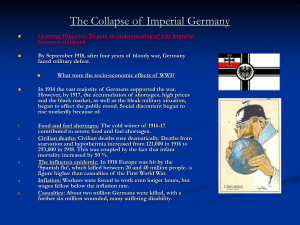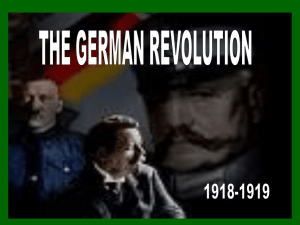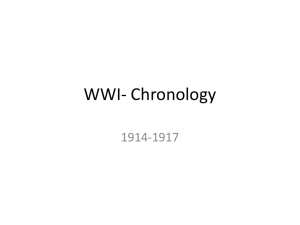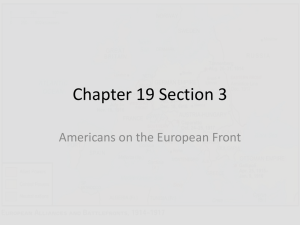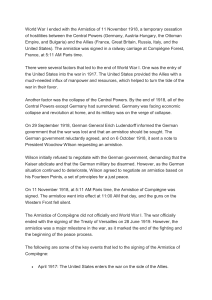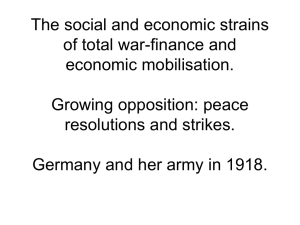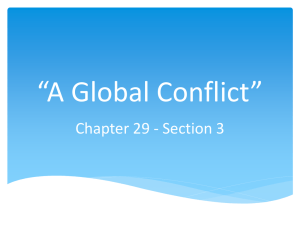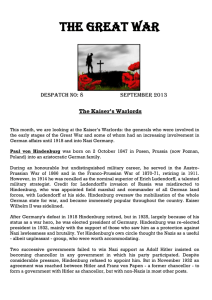Fortnightly Focus 9
advertisement
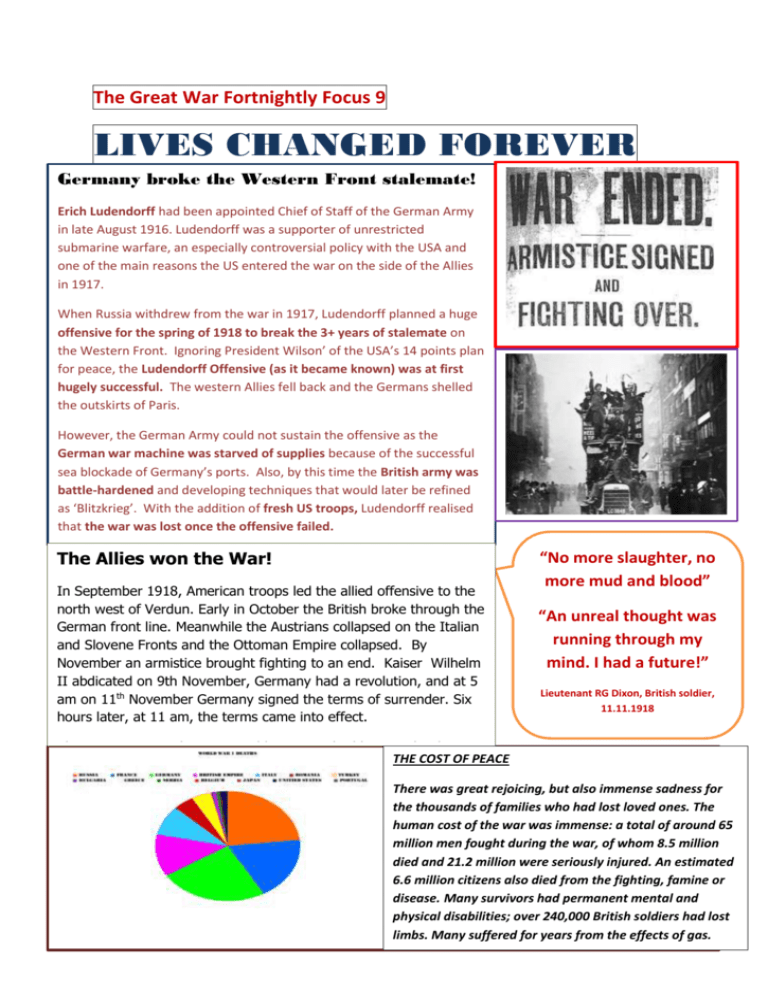
The Great War Fortnightly Focus 9 LIVES CHANGED FOREVER Germany broke the Western Front stalemate! Erich Ludendorff had been appointed Chief of Staff of the German Army in late August 1916. Ludendorff was a supporter of unrestricted submarine warfare, an especially controversial policy with the USA and one of the main reasons the US entered the war on the side of the Allies in 1917. When Russia withdrew from the war in 1917, Ludendorff planned a huge offensive for the spring of 1918 to break the 3+ years of stalemate on the Western Front. Ignoring President Wilson’ of the USA’s 14 points plan for peace, the Ludendorff Offensive (as it became known) was at first hugely successful. The western Allies fell back and the Germans shelled the outskirts of Paris. However, the German Army could not sustain the offensive as the German war machine was starved of supplies because of the successful sea blockade of Germany’s ports. Also, by this time the British army was battle-hardened and developing techniques that would later be refined as ‘Blitzkrieg’. With the addition of fresh US troops, Ludendorff realised that the war was lost once the offensive failed. The Allies won the War! In September 1918, American troops led the allied offensive to the north west of Verdun. Early in October the British broke through the German front line. Meanwhile the Austrians collapsed on the Italian and Slovene Fronts and the Ottoman Empire collapsed. By November an armistice brought fighting to an end. Kaiser Wilhelm II abdicated on 9th November, Germany had a revolution, and at 5 am on 11th November Germany signed the terms of surrender. Six hours later, at 11 am, the terms came into effect. “No more slaughter, no more mud and blood” “An unreal thought was running through my mind. I had a future!” Lieutenant RG Dixon, British soldier, 11.11.1918 The Great War, or the First World War as it had become by then, THE COST OF PEACE There was great rejoicing, but also immense sadness for the thousands of families who had lost loved ones. The human cost of the war was immense: a total of around 65 million men fought during the war, of whom 8.5 million died and 21.2 million were seriously injured. An estimated 6.6 million citizens also died from the fighting, famine or disease. Many survivors had permanent mental and physical disabilities; over 240,000 British soldiers had lost limbs. Many suffered for years from the effects of gas. ENTER A NEW ENEMY… After four years of war, which saw massive movements of people between and across continents, the world was ripe for a pandemic. It took the form of a virulent strain of influenza known as “Spanish flu”. The virus didn’t care if the country affected had been combatant or noncombatant; what was at first a mild form, appearing in US army camps in France, became highly infectious turning rapidly to pneumonia, against which no medicines worked. It spread like wildfire, moving across war-torn Europe with its malnourished people. By the time it ran its course, between 21 and 25 million people had died from the virus. Temporary hospital for US flu victims. Diltha Jackson was a Mount School girl who went on to become Head Girl. She wrote to her parents about the 11th November 1918, and she mentions the impact of the flu: “Now I must try to give you an account of Monday. The Dean of York said that the Minster Bells would ring out immediately the Armistice was signed and whatever hour he wished all the people who could to come to a service. …we were not even allowed to go at all because of “flu” and Bootham were!” OTHER WAR DAMAGE… …included shell-shock The sustained psychological and physical stress of the trenches led to a new kind of war damage which came to be known as shell -shock. Victims were often dealt with in a very unsympathetic fashion by the commanders and medical officers, partly because it could range from frayed nerves to complete mental collapse. Shell-shock victims eventually came to be recognised as genuine casualties of warfare. At the time, a report made it clear that shell-shock would not be accepted as a way out of fighting for soldiers; eventually, however, shorter tours of duty and psychotherapy were recommended. Pat Barker has written a trilogy – Regeneration, The Ghost Road and The Eye in the Door - which, though fictional, portrays the lives and treatment of some shell-shocked soldiers as they receive treatment in the latter years of World War 1. You’ll find her books in the library. Why not check out the many books on the special World War 1 display that you will find there? Vera Brittain lost her brother, her fiancé and two closest friends. She described her feelings at the Armistice in her autobiography ‘Testament of Youth’. “Already this was a different world from the one that I had known during four life-long years, a world in which people would be light-hearted and forgetful, in which themselves and their careers and their amusements would blot out political ideals and great national issues. And in that brightly lit, alien world I should have no part.” In Europe, only the governments of Britain and France survived from the countries that fought in World War 1. Elsewhere, revolution and civil war transformed the map of Europe. How would the victors make peace? What would be the legacy of ‘the War to end all wars’?
